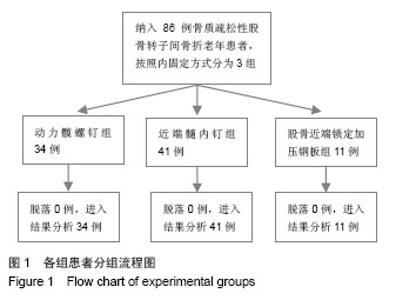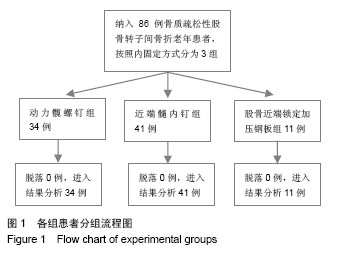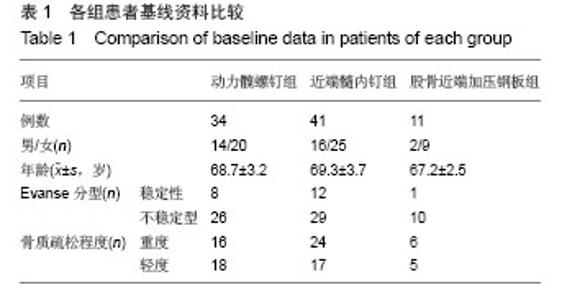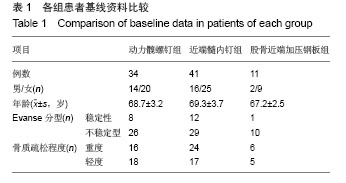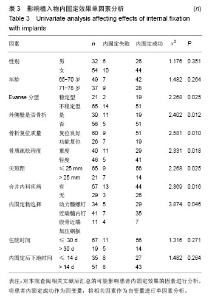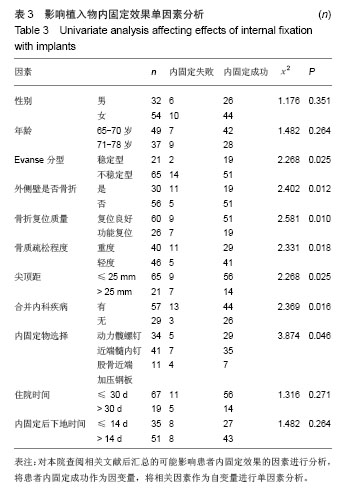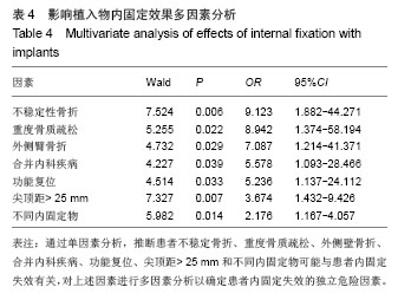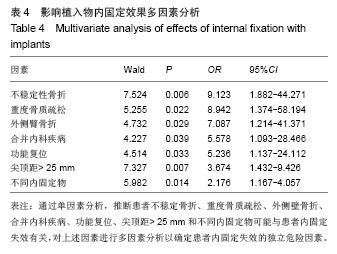| [1]朱奕,张长青.内固定治疗骨质疏松性股骨转子间骨折生物力学特性[J].国际骨科学杂志,2010,31(2):79-82.
[2]王骏骅,耿德春,杨惠林,等.老年骨质疏松性股骨转子间骨折植入物置入固定并综合治疗的特征分析[J].中国组织工程研究与临床康复,2011,15(52):9873-9876.
[3]朱剑.股骨近端螺旋刀片抗旋髓内钉置入治疗老年骨质疏松性股骨转子间骨折[J].中国组织工程研究与临床康复,2010,14(52): 9857-9860.
[4]叶茂,刘军,宋文超,等.动力髋螺钉结合尖顶距值治疗骨质疏松性股骨转子间骨折[J].实用医学杂志,2010,26(19):3591-3593.
[5]朱求亮,颜茂华,赵立来,等.锁定加压钢板治疗骨质疏松性股骨转子间骨折[J].中国骨伤,2011,24(5):378-381.
[6]陈柯,刘立云.动力髋螺钉和防旋股骨近端髓内钉治疗老年骨质疏松性股骨转子间骨折的早期疗效评价[J].中国矫形外科杂志,2011, 19(10):801-803.
[7]刘强.骨质疏松性股骨转子间骨折的治疗[J].中华骨科杂志,2014, 34(1):92-95.
[8]姚琦,陈迎春,张亘瑷,等.解剖钢板内固定治疗老年骨质疏松性股骨转子间骨折[J].中国老年学杂志,2010,30(10):1437-1438.
[9]闫玉明,廖勇,张伟平,等.Singh分类对股骨近端防旋髓内钉治疗老年骨质疏松性股骨转子间骨折的影响[J].中华创伤骨科杂志,2012, 14(2):175-177.
[10]王敏,刘恒旸,王华锋,等.防旋股骨近端髓内钉治疗老年骨质疏松性股骨转子间骨折的护理[J].中华现代护理杂志,2011,17(2): 187-189.
[11]梁昌详,詹世强,肖丹,等.老年骨质疏松性股骨转子间骨折的治疗策略[J].中国矫形外科杂志,2013,21(12):1247-1248.
[12]高伟强,王光林,陈经勇,等.PFNA治疗骨质疏松性股骨转子间骨折的疗效[J].实用骨科杂志,2012,18(1):24-26.
[13]张保,郑曙翘,闫红旗,等.两种方法治疗不稳定型骨质疏松性股骨转子间骨折疗效比较[J].临床骨科杂志,2012,15(1):70-72.
[14]袁高翔,王蕾,张伟滨,等.动力髋螺钉与股骨近端防旋髓内钉治疗骨质疏松性股骨转子间骨折的有限元比较研究[J].中华创伤骨科杂志, 2012,14(10):876-882.
[15]尚松,蒋赞利.股骨转子间骨折内固定失败的相关危险因素分析[J].东南大学学报(医学版),2013,32(3):324-326.
[16]殷小军,周正明,顾家烨,等.股骨转子间骨折内固定术后发生髋内翻的相关因素分析[J].中华创伤骨科杂志,2014,16(9):809-811.
[17]刘艳辉,刘艳玲,高凤梅,等.4种手术方法治疗老年骨质疏松性股骨转子间骨折疗效分析[J].临床骨科杂志,2012,15(4):418-421.
[18]赵昌平,巴英伟,牛朝旭,等.股骨近端防旋髓内钉治疗老年骨质疏松性股骨转子间骨折[J].河北医药,2013,11(23):3597-3598.
[19]周峰,许超.锁定加压钢板内固定治疗骨质疏松性股骨转子间骨折[J].中医正骨,2011,23(1):51-53.
[20]刘艳辉,赵金升,高凤梅,等.股骨近端髓内钉-螺旋刀片治疗老年骨质疏松性股骨转子间骨折疗效分析[J].中国医师进修杂志,2011, 34(17):60-62.
[21]邵建军,张辉,张海军,等.PFNA治疗老年骨质疏松性股骨转子间骨折的效果分析[J].卫生职业教育,2014,32(15):137-139.
[22]王亦璁.如何理解合理的骨折治疗[J].中华创伤骨科杂志,2002,4(1): 6-9.
[23]王秀.骨质疏松性股骨转子间骨折患者锁定加压钢板固定治疗的护理[J].解放军护理杂志,2011,28(2):38-40.
[24]王沈栋,董启榕,徐又佳,等.老年骨质疏松性股骨转子间骨折术后内固定失败的影响因素分析[J].中华创伤骨科杂志,2014,16(8): 656-661.
[25]陈建国.骨质疏松性股骨转子间骨折的手术治疗[J].中国医药, 2011, 6(z1):18-19.
[26]杨旭辉.动力髋螺钉微创手术治疗老年人骨质疏松性股骨转子间骨折[J].中国基层医药,2012,19(18):2819-2820.
[27]胡益华,李聪,李晓明,等.DHS常规内固定与微侵入治疗老年骨质疏松性股骨转子间骨折疗效比较[J].中外医学研究,2013, 1(1):1-2.
[28]王华锋,王静成,张圣飞,等.防旋股骨近端髓内钉治疗老年骨质疏松性股骨转子间骨折[J].中国医师杂志,2011,13(5):657-659. |
